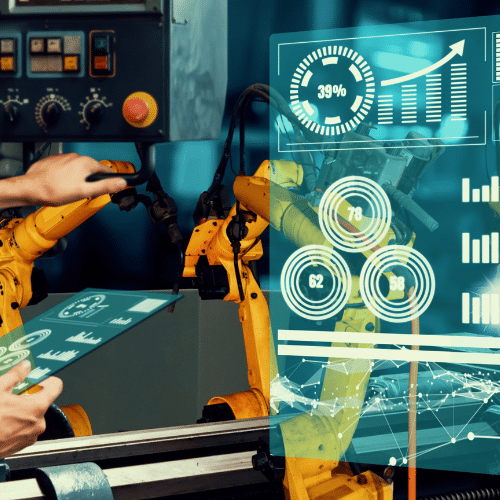Rapid manufacturing has revolutionized the way products are designed, developed, and produced. What started as a method for quickly creating prototypes has now evolved into a sophisticated process for manufacturing end-use parts on demand. This article will explore the evolution of rapid manufacturing, from its humble beginnings to its current role in production processes.
From Prototyping to Production
Rapid manufacturing, also known as additive manufacturing or 3D printing, was initially used primarily for rapid prototyping. Engineers and designers could quickly create physical models of their designs to test form, fit, and function before moving into full production. This sped up the product development cycle and reduced time to market.
As technology advanced, rapid manufacturing evolved beyond just prototyping and started being used for producing end-use parts and products directly. This shift revolutionized the manufacturing industry by offering a faster, more cost-effective, and flexible way to produce customized or low-volume parts.
Rapid manufacturing is a cutting-edge process that builds products layer by layer from digital models, offering reduced waste, design flexibility, and cost-effective small batch production.
The process involves building objects layer by layer from digital models, allowing for complex geometries and intricate designs that would be difficult or impossible to achieve with traditional manufacturing methods. With the ability to produce parts on-demand and on-site, additive manufacturing has the potential to transform supply chains, reduce waste, and create new opportunities for innovation across various industries.
The Rise of Additive Manufacturing
As the technology advanced and materials became more robust, the use of additive manufacturing expanded beyond prototyping. Companies began to see the potential of using 3D printing for manufacturing end-use parts. This shift from prototyping to production marked a significant milestone in the evolution of rapid manufacturing.
Additive manufacturing, also known as 3D printing, revolutionized the manufacturing industry by enabling the production of complex geometries and customized designs that were not possible with traditional manufacturing methods. The ability to create end-use parts directly from digital designs opened up new possibilities for industries such as aerospace, automotive, healthcare, and consumer goods.
With advancements in materials science and quality control processes, 3D printing technologies such as selective laser sintering (SLS), fused deposition modeling (FDM), and stereolithography (SLA) became capable of producing parts with high accuracy, strength, and durability. This made it feasible for companies to use additive manufacturing for producing functional components, tooling, and even final products for sale.
The shift from prototyping to production with additive manufacturing has resulted in numerous benefits for manufacturers, including reduced lead times, cost savings, design flexibility, and supply chain optimization. By embracing 3D printing for end-use parts, companies can streamline their production processes, iterate designs more quickly, and respond faster to market demands.
Overall, the adoption of additive manufacturing for manufacturing end-use parts represents a major transformation in the way products are made, setting the stage for a new era of rapid, agile, and sustainable manufacturing practices.
Advantages of Rapid Manufacturing
One of the key advantages of rapid manufacturing is the ability to create complex geometries that are difficult or impossible to achieve with traditional manufacturing methods. This design freedom allows for lightweighting, part consolidation, and customization, leading to more efficient and innovative products.
Rapid manufacturing’s capability to produce intricate shapes and designs opens up opportunities for creating lightweight components, consolidating multiple parts into a single piece, and enabling customization to meet specific requirements. This design flexibility not only enhances product performance but also fosters innovation by pushing the boundaries of what is achievable in traditional manufacturing processes. The ability to easily iterate and test different designs also accelerates the product development process, leading to faster time-to-market and ultimately driving competitiveness in the industry.
Speed and Flexibility
Rapid manufacturing also offers speed and flexibility in production. With traditional manufacturing processes, tooling and setup can take weeks or even months. In contrast, 3D printing can produce parts in a matter of hours, making it ideal for on-demand and low-volume production.
Rapid manufacturing also offers speed and flexibility in production. With traditional manufacturing processes, tooling and setup can take weeks or even months. In contrast, 3D printing can produce parts in a matter of hours, making it ideal for on-demand and low-volume production. This quick turnaround time allows for rapid prototyping and customization, giving manufacturers the ability to quickly iterate designs and bring products to market faster than ever before. Additionally, the flexibility of 3D printing allows for complex geometries and intricate designs that would be difficult or impossible to achieve with traditional methods. Overall, rapid manufacturing through 3D printing is revolutionizing the way products are made, offering efficiency, agility, and innovation in the production process.
Materials and Applications
The range of materials available for rapid manufacturing has also expanded, with options including plastics, metals, ceramics, and composites. This has opened up new applications in industries such as aerospace, automotive, healthcare, and consumer goods, where the performance requirements are high.
Rapid manufacturing has seen a significant growth in materials options, now including plastics, metals, ceramics, and composites. This expansion has enabled the technology to be utilized across various industries with high-performance demands such as aerospace, automotive, healthcare, and consumer goods.
Industry 4.0 and Digital Manufacturing
Rapid manufacturing is a key enabler of Industry 4.0 and the shift towards digital manufacturing. By integrating 3D printing with digital design tools, simulation software, and automation, companies can create a more streamlined and connected production process.
Rapid manufacturing is a crucial component of Industry 4.0, fostering the transition towards digital manufacturing. By merging 3D printing with digital design tools, simulation software, and automation, businesses can establish a more efficient and interconnected production workflow.
Conclusion
In conclusion, the evolution of rapid manufacturing from prototyping to production has transformed the way products are made. With its ability to create complex geometries, offer speed and flexibility, and enable digital manufacturing, 3D printing is reshaping the manufacturing industry. As the technology continues to advance and overcome challenges, we can expect to see even more widespread adoption of rapid manufacturing in the future.






